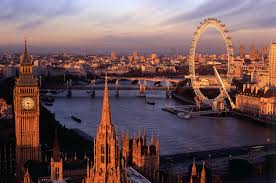 It is a common misconception that the ultra-wealthy residents of Mayfair do not contribute to the local economy. However, the findings in a new report from Wetherell quite clearly show this to be the opposite. In fact, the residents of the affluent neighbourhood support the shopping, leisure, and employments sectors substantially.
It is a common misconception that the ultra-wealthy residents of Mayfair do not contribute to the local economy. However, the findings in a new report from Wetherell quite clearly show this to be the opposite. In fact, the residents of the affluent neighbourhood support the shopping, leisure, and employments sectors substantially.
Mayfair is home to some 2,000 millionaires, of which 200 are earning nine-figure annual sums, and 20 are billionaires, who contribute an abundant £2.5 billion to the UK and local economy. With supporting data from Westminster City Council, Dataloft, and EGI, the report findings show that people living in the prime area support the economy through spending on employment, luxury shopping, consultants, and other expenditure. When reviewing the annual spending of super prime households in Mayfair, living in properties with a value of over £15 million, it revealed that the top three category spends are Interior and Artworks, Clothes, and Staff at £2,700,000, £644,000, and £325,000 respectively.
MAYFAIR’S RESIDENTIAL APPEAL
Mayfair has consistently remained at the top of London’s premier residential addresses and one of the top global destinations. However, the call of the area has attracted an ever changing resident profile. Over the years, inhabitants of the town are getting younger, with 43 percent of households housing young, affluent, educated couples or singles. With the property market offering mostly flats, designed to suit this younger residential profile, Mayfair is as youthful and active as ever.
Not only is Mayfair an attractive place to call home for younger residents, over 42 nationalities reside in the neighbourhood, and 60 percent were born overseas. As the fortunes of different parts of the global economy change, so will the likely mix of Mayfair’s residents. According to the Forbes Rich list, the US has 540 billionaires, followed by China at 251 and Germany at 120. The number of Middle Eastern billionaires is falling as oil prices decline – and the number of Russian-speaking billionaires dropped recently too.
UTILISING HOUSE PRICE GROWTH
W1K has been the most expensive postcode in Mayfair for an extended period, and this remains true in 2016. However, with a pipeline of world-class developments across Mayfair over the next five years, prices are likely to spread, and sales rates will expand across W1S and W1J.
The gains in prime central London market prices have been positive, in spite of the Global Financial Crisis, with prices today above the pre-crisis market in 2007, at a 45 percent higher rate. Prices have grown by 188 percent over the last ten years, which is much greater than the prime central London market average. As an investment, it has performed much better than the equity markets too. With the ability to cater to the demand of luxury living, offer universal design and provide the latest technology, new build homes are typically able to break new price barriers. The top developments can command a 100 percent premium over the current average prices in Mayfair.
The average flat is entering the market at over £1 million, and the average house costs £4.8 million. These values show that the premium for a Mayfair address, compared with the wider prime central London market, has been growing at a current rate of 42 percent, slightly lower than the 45 percent of last year, but higher than the average 30 percent over the last decade. The report also unveils that the average monthly rent in Mayfair is £1,387 per week.
There are 1,305 privately owned homes in Mayfair, with 870 social houses, and 2,173 privately rented apartments occupied by affluent tenants, making up the 4,348 properties in Mayfair. It is estimated that of the privately owned homes, 5 percent are worth less than £1 million, 50 percent are worth between £2 million and £10 million, and 45 percent are worth over £10 million.
With the continued appeal and attraction to wealthy residents, Mayfair can rest assured that the local economy will continue to be strongly supported and continue to grow.

No Comments